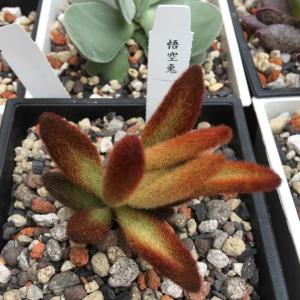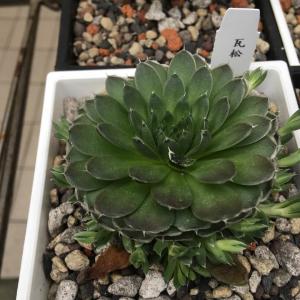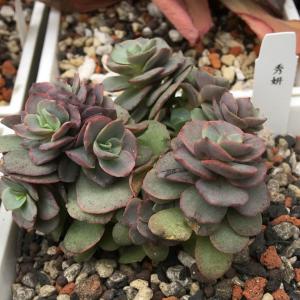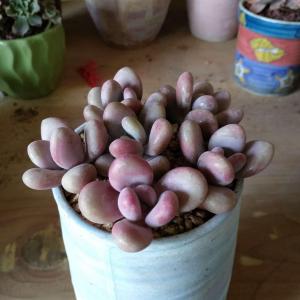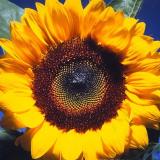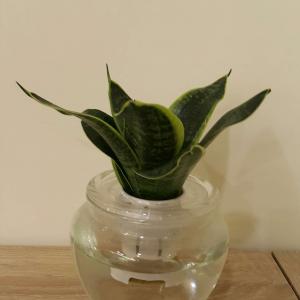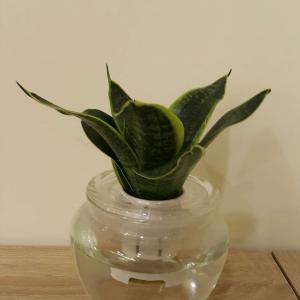Lisa Stout
2018年02月14日

Common: Coast Indian Paintbrush
Botanical: Castilleja affinis
Native: Western North America
Size: 2 ft tall x 2 ft wide
Likes: Full sun, rocky, Sandy, loamy soil
Facts: Rare to buy, butterfly attractant; hemi-parasite (derives some of its nutrients from host plant).


Botanical: Castilleja affinis
Native: Western North America
Size: 2 ft tall x 2 ft wide
Likes: Full sun, rocky, Sandy, loamy soil
Facts: Rare to buy, butterfly attractant; hemi-parasite (derives some of its nutrients from host plant).


0
0
Lisa Stout
2018年02月14日

Common: Silver Lupine, white-leaf bush lupine, or evergreen lupine
Botanical: Lupinus albifrons
Native: California
Size: 5 ft tall x 2 ft wide
Likes: full sun, good drainage, sandy or rocky soils that are dry, but will tolerate some moisture
Notes: deer resistant, bees, hummingbirds, and butterfly attractant, fragrant flowers


Botanical: Lupinus albifrons
Native: California
Size: 5 ft tall x 2 ft wide
Likes: full sun, good drainage, sandy or rocky soils that are dry, but will tolerate some moisture
Notes: deer resistant, bees, hummingbirds, and butterfly attractant, fragrant flowers


0
0
文章
Miss Chen
2018年02月12日

Description: This herbaceous perennial plant is 2-3' tall and unbranched, except for the upper flowering stems. The stems are covered with fine white hairs, as are the leaves, on both the upper and lower sides. These leaves are up to 4" long and 2" wide, light to medium green, lanceolate to ovate, with a fuzzy texture and smooth edges. They occur in opposite pairs, rotating 90° degrees as they ascend the stem. Small clusters of bright red or scarlet flowers occur at the top of the plant. The star-shaped flowers have 5 narrow petals that flare abruptly outward from a long tubular calyx that is about 1" long. The flowers are about ¾–1" across, and have exerted stamens with grey anthers. The calyx is light green, longitudinally ridged, and covered with sticky hairs that trap climbing insects. The blooming period occurs from mid- to late summer and lasts about a month. There is no floral scent. The small black seeds usually fall only a short distance from the mother plant. The root system consists of a taproot.

Cultivation: The preference is full or partial sun in moist to slightly dry soil. The soil can contain significant amounts of loam, clay-loam, or rocky material. Royal Catchfly is fairly easy to grow, but it is somewhat slower to develop than other plants and resents excessive shading. During drought, the lower leaves may turn yellow and fall off the plant. Plants begin to bloom while small in size, but it takes several years to reach their full potential.
Range & Habitat: The native Royal Catchfly occurs in widely scattered counties in Illinois, primarily in areas near Chicago, East St. Louis, and some SE counties (see Distribution Map). It is a rare plant that has endangered status in Illinois. Habitats include mesic black soil prairies, openings in upland forests, savannas, scrubby barrens, and open areas along roadsides and railroads. Because this forb is showy and available through the nursery trade, it has been introduced elsewhere around the state in prairie restorations and flower gardens.

Faunal Associations: The nectar of the flowers attracts the larger butterflies, such as Papilio polyxenes asterias (Black Swallowtail), and the Ruby-Throated Hummingbird. Aphids suck juices from the upper stems occasionally. There is little or no information regarding this plant's relationships to birds and animals at the present time.
Photographic Location: The photograph was taken at the webmaster's wildflower garden in Urbana, Illinois.
Comments: Red is an uncommon color among prairie plants because many pollinating insects (e.g., bees) are insensitive to this range of the light spectrum. However, some butterflies perceive red, and for this reason are attracted to such flowers. The flowers of Royal Catchfly have a design that favors butterflies as pollinating agents: They have a proboscis that is sufficiently long to reach the nectar at the bottom of the long narrow tube that is formed by the calyx, while the flared petals provide a colorful landing platform for their legs. The only other plant that resembles Royal Catchfly in Illinois is Silene virginica (Fire Pink). This latter species also has bright red flowers, but the tips of its petals are slightly notched. Fire Pink is a shorter plant that occurs in and around woodland areas, often on clay or rocky banks, and is not found in prairies.

Cultivation: The preference is full or partial sun in moist to slightly dry soil. The soil can contain significant amounts of loam, clay-loam, or rocky material. Royal Catchfly is fairly easy to grow, but it is somewhat slower to develop than other plants and resents excessive shading. During drought, the lower leaves may turn yellow and fall off the plant. Plants begin to bloom while small in size, but it takes several years to reach their full potential.
Range & Habitat: The native Royal Catchfly occurs in widely scattered counties in Illinois, primarily in areas near Chicago, East St. Louis, and some SE counties (see Distribution Map). It is a rare plant that has endangered status in Illinois. Habitats include mesic black soil prairies, openings in upland forests, savannas, scrubby barrens, and open areas along roadsides and railroads. Because this forb is showy and available through the nursery trade, it has been introduced elsewhere around the state in prairie restorations and flower gardens.

Faunal Associations: The nectar of the flowers attracts the larger butterflies, such as Papilio polyxenes asterias (Black Swallowtail), and the Ruby-Throated Hummingbird. Aphids suck juices from the upper stems occasionally. There is little or no information regarding this plant's relationships to birds and animals at the present time.
Photographic Location: The photograph was taken at the webmaster's wildflower garden in Urbana, Illinois.
Comments: Red is an uncommon color among prairie plants because many pollinating insects (e.g., bees) are insensitive to this range of the light spectrum. However, some butterflies perceive red, and for this reason are attracted to such flowers. The flowers of Royal Catchfly have a design that favors butterflies as pollinating agents: They have a proboscis that is sufficiently long to reach the nectar at the bottom of the long narrow tube that is formed by the calyx, while the flared petals provide a colorful landing platform for their legs. The only other plant that resembles Royal Catchfly in Illinois is Silene virginica (Fire Pink). This latter species also has bright red flowers, but the tips of its petals are slightly notched. Fire Pink is a shorter plant that occurs in and around woodland areas, often on clay or rocky banks, and is not found in prairies.
0
0
文章
Miss Chen
2018年02月12日

Description: This annual plant is 1-2½' tall, branching occasionally. The stems are light green and somewhat ridged. The lower stems often sprawl along the ground in open areas, otherwise this plant is erect. The compound leaves alternate along the stems. They are evenly pinnate, usually with 3 pairs of leaflets, and have long leaf stems (primary petioles). The obovate leaflets are individually 1½" long and 1" across. They are devoid of hairs and pale green on their undersides. There is an extra-floral nectary close to the lowest pair of leaflets on the upper side of each compound leaf. This nectary resembles a small brown spike. The foliage has a slightly rank odor.
One or two flowers develop from the upper axils of the compound leaves. These flowers have pedicels about 1" long and tend to nod slightly downward. They are about 1" across, and consist of 5 rounded yellow petals and 10 stamens; the petals are often slightly unequal in size. The flowers are subtended by a light green calyx that is divided into 5 folded sepals; these sepals are shorter than the petals and hairless. In Illinois, the blooming period occurs from late summer through the fall, and lasts about 1-2 months. There is no floral scent. A long seedpod develops from each flower that is 4-6" long, but only 1/3" across. This seedpod curves downward and resembles a sickle in its overall shape. The root system consists of taproot. This plant spreads by reseeding itself.
Cultivation: The preference is full sun and moist to slightly dry conditions. This plant tolerates different kinds of soil, from fertile loam to gravelly soil; in fact, it often thrives in railroad ballast. Drought tolerance is good, and the foliage is rarely bothered by foliar disease. It is somewhat slow to develop for an annual plant, and tends to bloom late in the year in Illinois.

Range & Habitat: Sicklepod has been reported from only a few counties in southern Illinois and in the Chicago area; it has been observed recently along a railroad track in Champaign County, where it is probably adventive from the south (see Distribution Map). This is a rare plant in Illinois, although it is more common in many south-central and southeastern states of the US; it also occurs in the American tropics. In southern Illinois, Sicklepod may be native, while elsewhere in the state it is definitely adventive from the south. Habitat information is scanty, but it has been observed in moist meadows along rivers, open areas along railroads, and in waste areas. Areas with a history of disturbance are preferred.
Faunal Associations: The extra-floral nectaries attract ants primarily; they may also attract some wasps, flies, or small bees. The pollen of the flowers attract long-tongued bees, such as bumblebees, Miner bees, and large Leaf-Cutting bees. The caterpillars of several species of Sulfur butterflies are known to feed on the foliage of Cassia spp., including Eurema lisa (Little Sulfur), Eurema nicippe (Sleepy Orange), and Phoebis sennae cubule (Cloudless Sulfur). Some upland gamebirds occasionally eat the seeds of Senna spp., especially the Bobwhite and Greater Prairie Chicken. Mammalian herbivores are unlikely to utilize this plant as a food source to any significant extent because of the unpleasant taste and toxic nature of the foliage, which has been found capable of poisoning livestock.

Photographic Location: Photographs were taken along a railroad in Savoy, Illinois.
Comments: This rare plant has attractive foliage, but blooms sparingly. Sicklepod resembles Senna marilandica (Maryland Senna) and Senna hebecarpa (Wild Senna) somewhat in appearance, but it is a shorter annual plant that has 1) fewer leaflets per compound leaf, 2) leaflets with a more obovate shape, and 3) seedpods that are more curved and slender. In the past, Sicklepod was assigned to the Bean family (Fabaceae), rather than the Caesalpinia family.
One or two flowers develop from the upper axils of the compound leaves. These flowers have pedicels about 1" long and tend to nod slightly downward. They are about 1" across, and consist of 5 rounded yellow petals and 10 stamens; the petals are often slightly unequal in size. The flowers are subtended by a light green calyx that is divided into 5 folded sepals; these sepals are shorter than the petals and hairless. In Illinois, the blooming period occurs from late summer through the fall, and lasts about 1-2 months. There is no floral scent. A long seedpod develops from each flower that is 4-6" long, but only 1/3" across. This seedpod curves downward and resembles a sickle in its overall shape. The root system consists of taproot. This plant spreads by reseeding itself.
Cultivation: The preference is full sun and moist to slightly dry conditions. This plant tolerates different kinds of soil, from fertile loam to gravelly soil; in fact, it often thrives in railroad ballast. Drought tolerance is good, and the foliage is rarely bothered by foliar disease. It is somewhat slow to develop for an annual plant, and tends to bloom late in the year in Illinois.

Range & Habitat: Sicklepod has been reported from only a few counties in southern Illinois and in the Chicago area; it has been observed recently along a railroad track in Champaign County, where it is probably adventive from the south (see Distribution Map). This is a rare plant in Illinois, although it is more common in many south-central and southeastern states of the US; it also occurs in the American tropics. In southern Illinois, Sicklepod may be native, while elsewhere in the state it is definitely adventive from the south. Habitat information is scanty, but it has been observed in moist meadows along rivers, open areas along railroads, and in waste areas. Areas with a history of disturbance are preferred.
Faunal Associations: The extra-floral nectaries attract ants primarily; they may also attract some wasps, flies, or small bees. The pollen of the flowers attract long-tongued bees, such as bumblebees, Miner bees, and large Leaf-Cutting bees. The caterpillars of several species of Sulfur butterflies are known to feed on the foliage of Cassia spp., including Eurema lisa (Little Sulfur), Eurema nicippe (Sleepy Orange), and Phoebis sennae cubule (Cloudless Sulfur). Some upland gamebirds occasionally eat the seeds of Senna spp., especially the Bobwhite and Greater Prairie Chicken. Mammalian herbivores are unlikely to utilize this plant as a food source to any significant extent because of the unpleasant taste and toxic nature of the foliage, which has been found capable of poisoning livestock.

Photographic Location: Photographs were taken along a railroad in Savoy, Illinois.
Comments: This rare plant has attractive foliage, but blooms sparingly. Sicklepod resembles Senna marilandica (Maryland Senna) and Senna hebecarpa (Wild Senna) somewhat in appearance, but it is a shorter annual plant that has 1) fewer leaflets per compound leaf, 2) leaflets with a more obovate shape, and 3) seedpods that are more curved and slender. In the past, Sicklepod was assigned to the Bean family (Fabaceae), rather than the Caesalpinia family.
0
0
文章
Miss Chen
2018年02月11日

Description: This perennial plant is 2½-5' tall; it is unbranched, or with a few small stems near the inflorescence. The central stem is ridged and slightly pubescent. The opposite leaves are greyish green, narrowly lanceolate, with serrated or dentate margins toward their tips. They are about 3-5" long and ¾" wide, becoming linear and shorter near the inflorescence. The foliage exudes a sage scent and has a sage taste.
There is one or more whorled spikes of flowers toward the apex of the plant that are up to 1' long. The corolla of these flowers ranges in color from pale blue to deep dark blue, usually with a lighter-colored throat. The corolla is short and tubular, dividing into a small upper lobe and a large lower lobe that functions as a landing pad for visiting insects. The tubular calyx is dull green, longitudinally ridged, pubescent, and bluntly toothed. Each flower is about ¾" long from top to bottom. The blooming period occurs during the late summer and fall, and lasts about 1-2 months. There is no floral scent. Only a few flowers are in bloom at the same time. The root system consists of a large central taproot, from which several stems may be produced.
Cultivation: The preference is full sun and dry, well-drained conditions. Different kinds of soil are acceptable, including those that contain significant amounts of loam, clay, or gravel. A high pH is tolerated. The seed germinates readily, often producing flowering plants during the first year. This is a surprisingly easy plant to grow, with few problems from disease. If the soil is too moist and fertile, or sunlight is insufficient, plants may become spindly and flop over while blooming later in the year.

Habitat & Range: Wild Blue Sage is a rare plant in Illinois with state-listed 'threatened' status. It has been reported from only a few scattered counties, primarily in central and southern Illinois (see Distribution Map). Some authorities assume that this plant is adventive from the west, while others regard it as native to the state. Habitats include dry, upland areas of black soil prairies, gravel prairies, limestone glades, roadsides, and miscellaneous waste areas. This plant would likely thrive in dolomite prairies and hill prairies, although it has not been observed in such areas.
Faunal Associations: Long-tongued bees visit the flowers for nectar, especially bumblebees. Halictid bees occasionally collect pollen, but they are non-pollinating. Less often, butterflies and skippers may visit the flowers for nectar, including Epargyreus clarus (Silver-Spotted Skipper). The caterpillars of the moth Sphinx eremitus (Hermit Sphinx) may feed on the foliage. Mammalian herbivores usually avoid this plant as a food source – apparently they dislike the sage scent, or perhaps the scent is associated with indigestion from chemicals that disrupt bacterial populations in their digestive tracts.
Photographic Location: The photographs of the flowering plant and flower close-up were taken at Meadowbrook Park, Urbana, Illinois, while the photograph of the leaf was taken at the wildflower garden of the webmaster in the same city and state.

Comments: This is a wonderful plant with attractive blue flowers – a pleasant alternative to the preponderance of goldenrods and asters during the fall. It can be confused with no other plant within the state. Wild Blue Sage is more common in states that lie west of the Mississippi River, such as Nebraska and Missouri. In Illinois, only small remnant populations exist. A different variety occurs in some southeastern states, Salvia azurea azurea, which has less showy flowers. In the past, the scientific name for Salvia azurea grandiflora was Salvia pitcheri, and it is still referred to as Pitcher's Sage by some authorities.
There is one or more whorled spikes of flowers toward the apex of the plant that are up to 1' long. The corolla of these flowers ranges in color from pale blue to deep dark blue, usually with a lighter-colored throat. The corolla is short and tubular, dividing into a small upper lobe and a large lower lobe that functions as a landing pad for visiting insects. The tubular calyx is dull green, longitudinally ridged, pubescent, and bluntly toothed. Each flower is about ¾" long from top to bottom. The blooming period occurs during the late summer and fall, and lasts about 1-2 months. There is no floral scent. Only a few flowers are in bloom at the same time. The root system consists of a large central taproot, from which several stems may be produced.
Cultivation: The preference is full sun and dry, well-drained conditions. Different kinds of soil are acceptable, including those that contain significant amounts of loam, clay, or gravel. A high pH is tolerated. The seed germinates readily, often producing flowering plants during the first year. This is a surprisingly easy plant to grow, with few problems from disease. If the soil is too moist and fertile, or sunlight is insufficient, plants may become spindly and flop over while blooming later in the year.

Habitat & Range: Wild Blue Sage is a rare plant in Illinois with state-listed 'threatened' status. It has been reported from only a few scattered counties, primarily in central and southern Illinois (see Distribution Map). Some authorities assume that this plant is adventive from the west, while others regard it as native to the state. Habitats include dry, upland areas of black soil prairies, gravel prairies, limestone glades, roadsides, and miscellaneous waste areas. This plant would likely thrive in dolomite prairies and hill prairies, although it has not been observed in such areas.
Faunal Associations: Long-tongued bees visit the flowers for nectar, especially bumblebees. Halictid bees occasionally collect pollen, but they are non-pollinating. Less often, butterflies and skippers may visit the flowers for nectar, including Epargyreus clarus (Silver-Spotted Skipper). The caterpillars of the moth Sphinx eremitus (Hermit Sphinx) may feed on the foliage. Mammalian herbivores usually avoid this plant as a food source – apparently they dislike the sage scent, or perhaps the scent is associated with indigestion from chemicals that disrupt bacterial populations in their digestive tracts.
Photographic Location: The photographs of the flowering plant and flower close-up were taken at Meadowbrook Park, Urbana, Illinois, while the photograph of the leaf was taken at the wildflower garden of the webmaster in the same city and state.

Comments: This is a wonderful plant with attractive blue flowers – a pleasant alternative to the preponderance of goldenrods and asters during the fall. It can be confused with no other plant within the state. Wild Blue Sage is more common in states that lie west of the Mississippi River, such as Nebraska and Missouri. In Illinois, only small remnant populations exist. A different variety occurs in some southeastern states, Salvia azurea azurea, which has less showy flowers. In the past, the scientific name for Salvia azurea grandiflora was Salvia pitcheri, and it is still referred to as Pitcher's Sage by some authorities.
0
0



